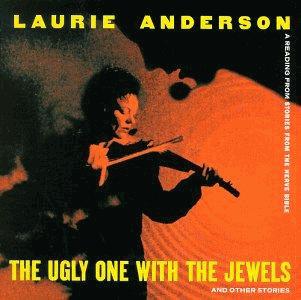
| Artist: | Laurie Anderson |
| Title: | Ugly One with the Jewels and Other Stories |
| Released: | 1995 |
| Label: | Warner Bros. Records Inc. |
| Time: | 71:00 |
| Producer(s): | Laurie Anderson |
| Appears with: | |
| Category: | Pop/Rock |
| Rating: | *********. (9/10) |
| Media type: | CD |
| Purchase date: | 2000.09.25 |
| Price in €: | 1,47 |
| Web address: | www.laurieanderson.com |